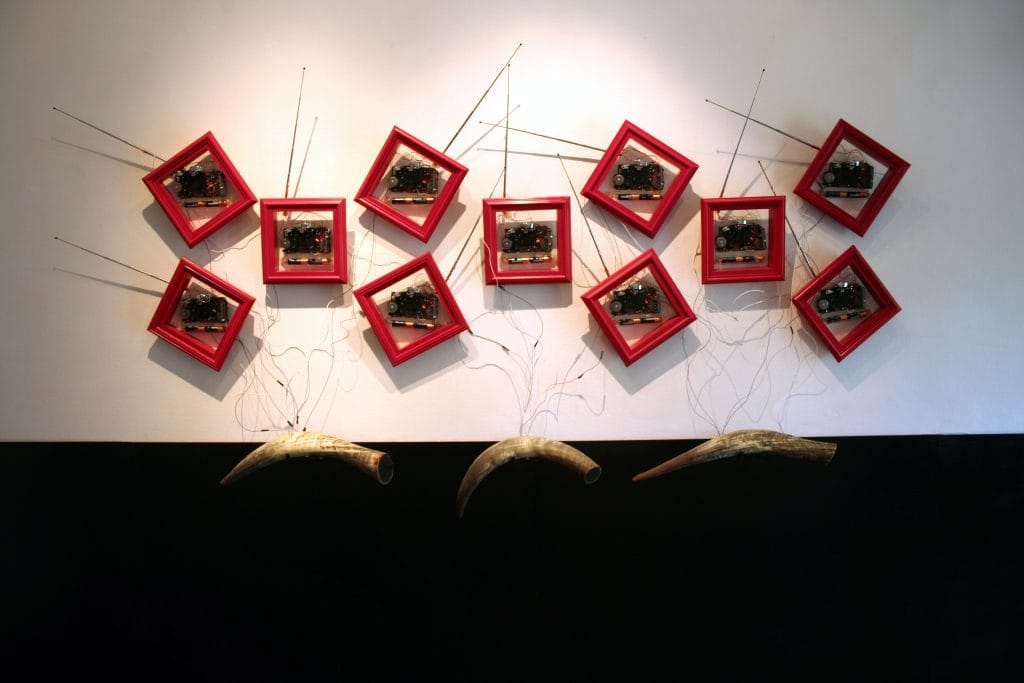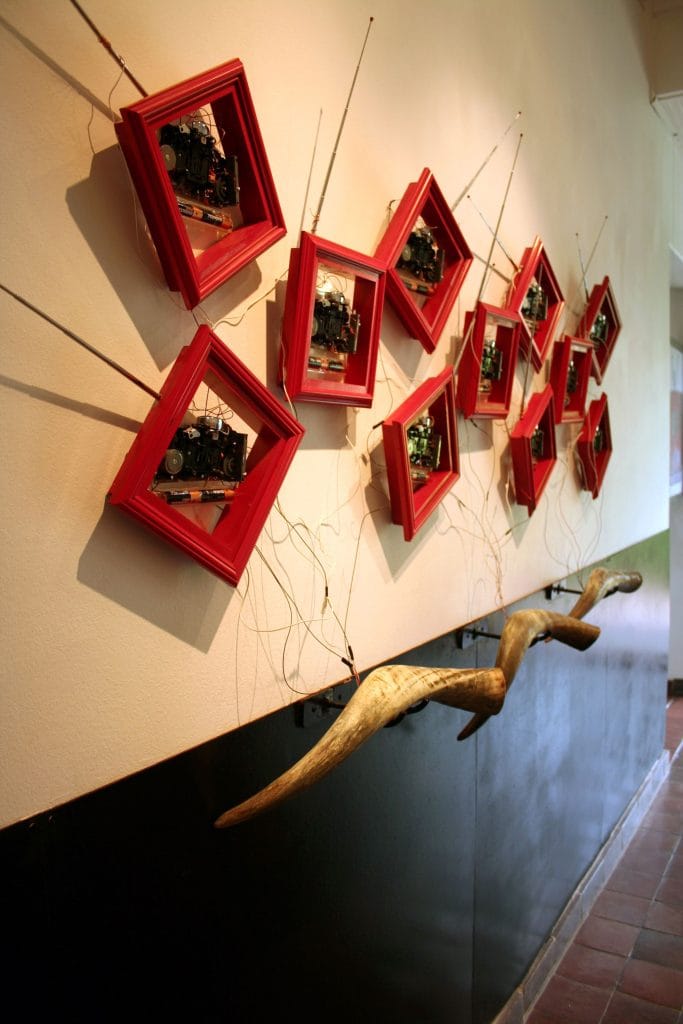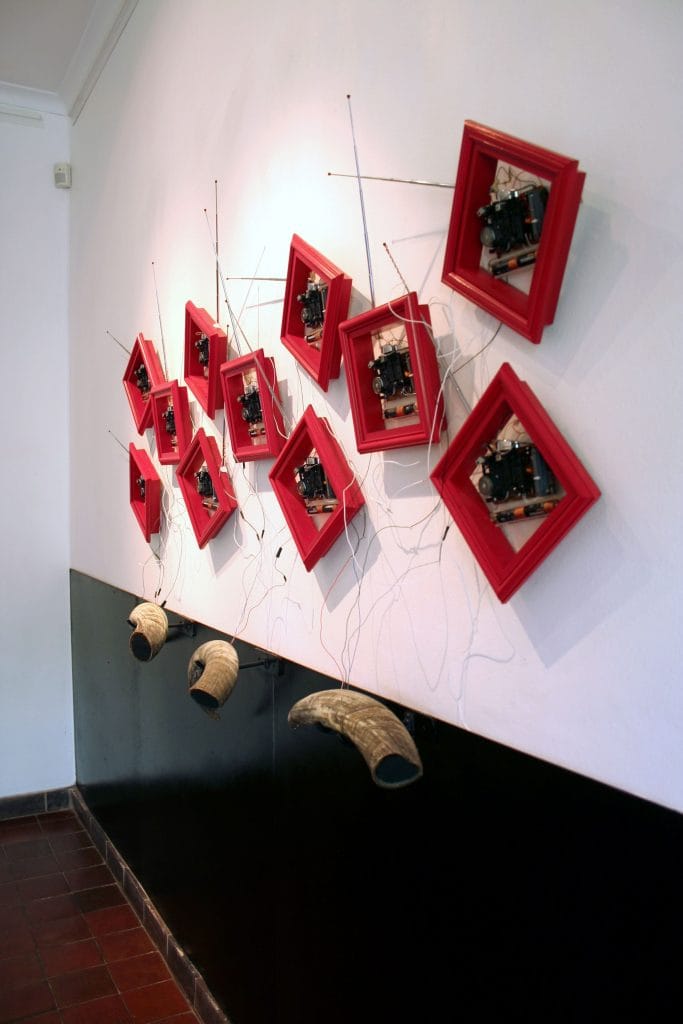
KWERE KWERE 2007, radio installation,
National Library, Pretoria, South Africa
Since colonial governance and throughout Apartheid rule language can be described as being a defining characteristic of ethnicity, creating boundaries of ethnic identity through the standardisation of African languages. At the height of Apartheid these boundaries also became physical boundaries set up by the government. For example, people were removed to ethnic “homelands”, and urban townships were linguistically zoned. These boundaries had to be maintained, and no institution other than a racially and ethnically segregated education system was better equipped for the task (Mesthrie 2002:435).
The artwork Kwere Kwere comments on the current “language dilemma” we are facing in South Africa. Children are being deprived of a good education because of their inability to express themselves in the language used by the teachers in the classroom as well as their mother tongues at home. The artwork can be described as representing a “contemporary” mural for a New South Africa. It comprises of eleven radios framed in red and arranged in a typical geometric pattern on a black and white wall, as well as three horns mounted underneath the hanged radios forming their speakers. Thus, the viewer will hear cacophonic sounds on entering the space.


